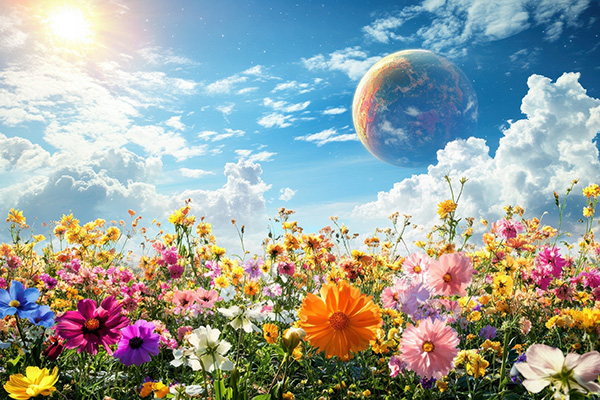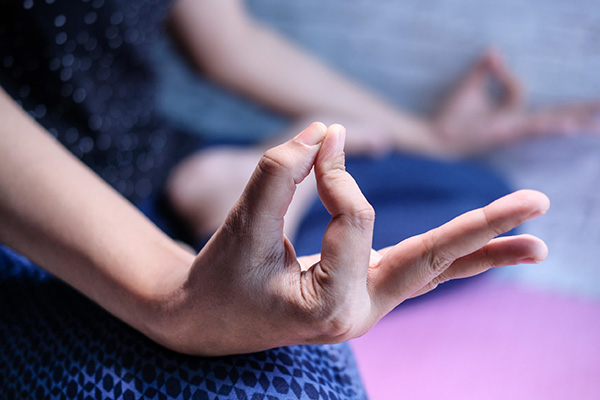Weekly Astrology Forecast for June 2 – 8, 2025
 The week starts off with the meticulous and practical influence of a Virgo moon, establishing a discerning and orderly atmosphere for the upcoming days.
The week starts off with the meticulous and practical influence of a Virgo moon, establishing a discerning and orderly atmosphere for the upcoming days.
With the Virgo moon in effect, our urge to achieve perfection often peaks. You might find yourself suddenly wanting to sort your spice collection, organize your emails by color, or micromanage your emotional landscape. Think of it as universal quality assurance!
Virgo’s pragmatic energy heightens analytical thinking and critical discernment, which proves beneficial for assessing current projects or reaching long-anticipated conclusions. Today and tomorrow present an excellent opportunity to recalibrate, reset, and realign with your highest aspirations. The cosmos is lending support, nudging you to clear mental and physical debris, make deliberate decisions, and refine your ongoing initiatives.
This dynamic energy persists through Tuesday, granting a 48-hour span of clarity, focus, and boosted productivity. Make the most of it!
The morning opens with the Moon forming a quincunx to Pluto in Aquarius, producing a subtle yet powerful energy that reveals psychological undertones. You might feel an internal tussle between your emotional needs and deeper drives or power plays.
Something concealed may come into the light, like an epiphany regarding your role in a complicated matter or the realization that it’s time to relinquish a habit or belief that hinders your growth. Utilize this aspect to confront these realities with Virgo’s pragmatic insight, rather than acting on impulse.
This afternoon, the Moon creates a sextile with Lilith in Scorpio, enhancing our intuitive capacities. This transit promotes emotional autonomy and unapologetic authenticity. Although Virgo seeks order, Lilith thrives amidst raw chaos. Yet, together they facilitate a connection between instinct and method. You may feel driven to address a minor boundary issue or divulge an unpopular truth. Use this moment to affirm your independence while remaining grounded and articulate.
The Moon shifts into Libra midweek, transitioning the atmosphere toward equilibrium, harmony, and mutual appreciation. Libra moons encourage diplomacy and collaboration, making Wednesday and Thursday advantageous for teamwork, relationship development, and interpersonal discussions.
The highlight of the week occurs when Venus enters Taurus on Friday, one of her ruling signs. This position is profoundly sensual, grounded, and focused on pleasure. In the weeks ahead, you’ll likely be attracted to beauty in all its forms: nature, music, fabrics, fragrances, exquisite meals, and meaningful touch.
You may find yourself making more tangible purchases, especially those that provide comfort, aesthetic delight, or lasting value. Romantic energy also tends to move slower, becoming more intentional, rooted in shared values and physical presence during this period.
The weekend is colored by the emotional tones of a Scorpio moon, prompting inward reflection. It’s an ideal time for self-exploration, journaling, or engaging in shadow work. The depths run profound, and what you unveil now might hold the key to understanding a current mystery or obstacle in your life.
Despite Scorpio’s introspective nature, the Gemini sun will remind us of the joy found in connecting with others. Social gatherings this weekend may take on more significance and feel less superficial. Conversations might delve into existential themes, covering topics like life, death, fate, and personal truth. Allow yourself to be both vulnerable and discerning.
On Sunday, Mercury will enter Cancer, where it will stay for about 18 days, until it transitions to Leo on June 26. During this time, Mercury’s influence will shift from Gemini’s communicative and analytical essence to Cancer’s emotionally intuitive and nurturing traits. This transit highlights emotional intelligence, compassionate communication, and focus on home and family matters. It’s an excellent time to engage in heartfelt dialogues, tackle familial issues, and reflect on personal emotional needs.
Words may carry more emotional weight, and memories may feel more resonant. We will communicate less from rational thought and more from emotional depth. This transition enhances empathy, intuition, and the wish to speak in nurturing, protective ways. Over the next three weeks, you may notice yourself becoming more contemplative or sentimental, drawn to storytelling, family narratives, or ancestral wisdom.
|
Residing in New Mexico, Susyn provides Psychic Guidance, Astrological Insights, and Channeled Messages that can transform your life! Her impressive credentials include a doctorate in metaphysical studies and certifications from The American Association of Professional Psychics and The American Tarot Guild. Additionally, she is a published author with two metaphysical books and has contributed numerous articles and horoscope columns. Beyond her readings, Susyn also mentors individuals on mastering their own abilities, elevating their vibrations, and empowering themselves. A popular guest on various radio shows, she has also hosted her own program. For those seeking a truly illuminating guide who can interpret them with astounding accuracy, your search ends here. You can find Susyn at PsychicAccess.com. |
As we embrace the first week of June 2025, the stars are aligning to facilitate noticeable changes and shifts in the cosmic landscape. Astrology enthusiasts and those who believe in celestial power are brimming with anticipation for the week ahead. Let’s explore the weekly astrology predictions for June 2 – 8, 2025.
Aries (March 21 – April 19):
This week, Aries will experience a boost of energy and motivation to face any challenges head-on. The planetary arrangement indicates that now is an opportune time to take decisive action and pursue your objectives with boldness. Trust your instincts and embrace the prospect of taking risks.
Taurus (April 20 – May 20):
For Taurus, this week is dedicated to achieving balance in your life. The planets are prompting you to prioritize self-care and nurture your emotional health. Set aside time to unwind and recharge, and don’t hesitate to seek assistance if needed.
Gemini (May 21 – June 20):
For Gemini, clear communication will be vital this week. The stars are coming together to aid you in expressing yourself effectively and articulately. Utilize this opportunity to engage in significant discussions and share your thoughts and insights with others.
Cancer (June 21 – July 22):
Cancer, this week centers around embracing transformation and letting go of the past. The planets encourage you to relinquish old behaviors or beliefs that may be restricting your progress. Have faith in the universe and allow yourself to advance confidently.
Leo (July 23 – August 22):
Leo, this week is geared towards enhancing your relationships. The planetary alignment suggests that now is the time to fortify your connections with others and demonstrate your care for your loved ones. Communicate openly and honestly, and don’t shy away from sharing your emotions.
Virgo (August 23 – September 22):
For Virgo, this week focuses on prioritizing your physical health and well-being. The stars are advocating for you to emphasize self-care and allocate time for exercise, healthy eating, and relaxation. Pay attention to your body and provide it with the attention it needs.
Libra (September 23 – October 22):
Libra, this week is all about creativity and self-expression. The planets are harmonizing to help you tap into your artistic potential and explore fresh methods of expressing yourself. Embrace your unique skills and don’t hesitate to showcase them to the world.
Scorpio (October 23 – November 21):
For Scorpio, this week emphasizes your home and family life. The planetary configuration suggests it’s time to nurture your relationships with loved ones and cultivate a sense of peace in your home. Dedicate time to connect with your family and establish a serene environment.
Sagittarius (November 22 – December 21):
Sagittarius, this week invites you to broaden your horizons and seek new experiences. The stars are guiding you to step beyond your comfort zone and embrace fresh opportunities. Welcome adventure and remain receptive to new possibilities.
Capricorn (December 22 – January 19):
Capricorn, this week calls for a focus on your financial and career ambitions. The planetary alignment indicates that it’s time to clarify your intentions for your financial future and take actionable steps toward your professional goals. Maintain a disciplined and focused approach in your endeavors.
Aquarius (January 20 – February 18):
Aquarius, this week is oriented towards introspection and self-reflection. The stars encourage you to carve out time for quiet contemplation and connect with your inner self. Heed your intuition and trust your inner wisdom as you journey forward.
Pisces (February 19 – March 20):
For Pisces, this week centers around social connections and networking. The planetary configuration indicates that now is the time to reach out and forge new relationships. Embrace collaboration and teamwork, and don’t hesitate to ask for help when needed.
In general, the week from June 2 – 8, 2025, holds the promise of growth, transformation, and change for all zodiac signs. Embrace the energies of the stars and trust in the universe to lead you along your path. Remain open to new opportunities and adaptable in facing any challenges that arise. May the stars shine brightly upon you this week. Continue reading

















